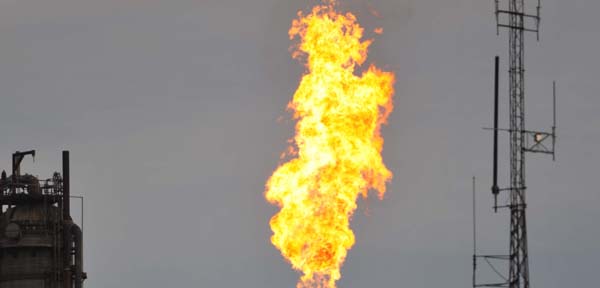
Say emissions pose threat to St. Charles residents
The Louisiana Bucket Brigade has joined up with a number of other environmental groups to challenge what they call archaic emission quality standards that are lackadaisically enforced by the Environmental Protection Agency. They say those emissions pose a threat to communities in the vicinity of flares and hazardous material storage sites.
St. Charles Parish is the second most industrialized parish in the state and is home to numerous flares the Louisiana Bucket Brigade (LABB) says are poorly regulated.
Joining the Texas Environmental Justice Advocacy Service, Air Alliance Houston and Community In-Power and Development Association Inc.,LABB filed a lawsuit through the Environmental Integrity Project against the EPA that accuses the federal agency of lack oversight in industrial containment of hazardous materials.
LABB and their partners in the lawsuit assert that every three years the EPA is required under the Clean Air Act to revise formulas, known as emissions factors, that plants use to estimate the amount of emissions they release. The lawsuit states such an assessment has not taken place for flares since 1991.
Citing recent studies done on emissions factors, Anna Hrybyk, program manager for LABB, said the group’s concern is that the release of potentially harmful chemicals are not being measured accurately.
“Industrial sites are allowed to use emissions factors that estimate the efficiency of flares, which they say are around 98 percent,” she said. “When the refinery isn’t functioning optimally the refinery is only burning 50 to 60 percent of the emissions, which leads us to believe that refineries are grossly underestimating the amount of emissions burned by the flares.”
Included in the emissions Hrybyk expects are being released without properly burning off in the flare is benzene, which is proven to cause cancer in cases of long-term exposure. She also believes other chemicals are being released that can cause diseases and have health affects on parish residents with respiratory ailments.
“This affects public health because it allows the refineries to expose people to emissions beyond what the law allows,” she said.
What LABB and their counterparts are calling for, in addition to updated emissions factors, are stack testing, which would involve putting devices in the flares that would more accurately record the amount of emissions being burnt off and the amount being released.
“All of them are using emissions factors to calculate their emissions from the flare. If emissions factors were revised and updated they would have to increase their amounts pretty significantly,” Hrybryk said. “One thing we advise is that they do stack testing to see what is coming out of the flare.”
Hrybyk said a telltale sign of improperly released emissions has been noticed during flaring at the Shell/Motiva complex a few weeks ago, which is something she anticipates would be minimized if stack monitoring were in place.
“When they are not burning efficiently they tend to have a lot of black smoke and in that case they are releasing a lot of emissions,” she said.
Both the Louisiana Department of Environmental Quality and Motiva declined to comment on the lawsuit given that neither are a party to it.




Be the first to comment